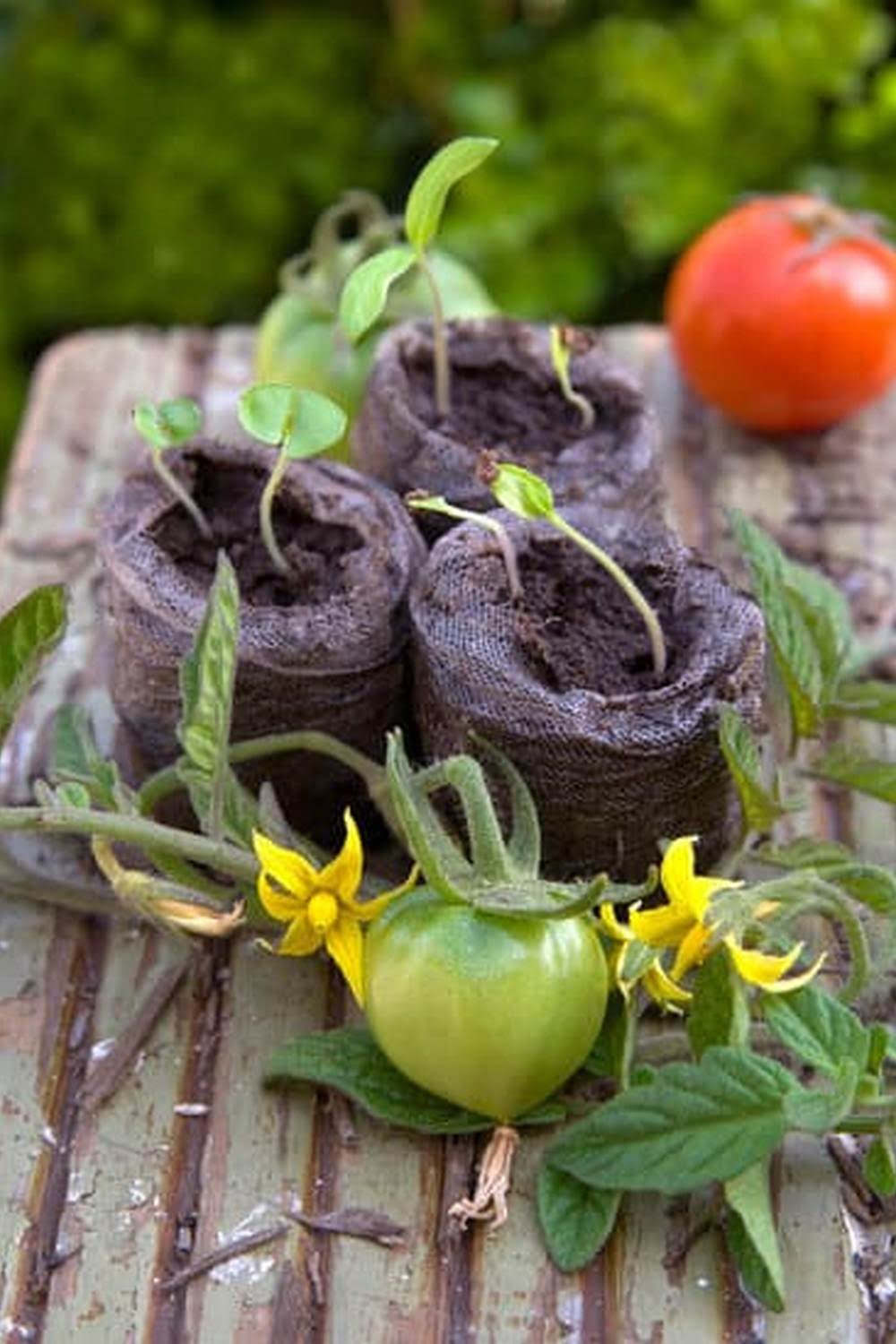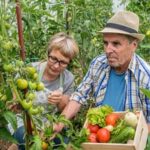Soil Preparation For Raised Vegetable Garden
Beds
When preparing soil for a raised vegetable garden bed, it is important to create a loose, fertile soil that will provide the plants with the nutrients they need to grow. The best way to do this is to mix in a good amount of organic matter such as compost, manure, or leaf mold. This will help to improve the structure of the soil and also provide the plants with essential nutrients.
In addition, it is important to add a layer of mulch to the top of the soil. This will help to keep the soil moist and also act as a barrier against weeds. A layer of mulch of at least 2-3 inches is recommended.
If your soil is not very fertile, you may also want to add some organic fertilizer to the mix. A balanced fertilizer such as 10-10-10 is a good choice. Be sure to read the label to make sure that the fertilizer is safe for use in vegetable gardens.
Once the soil is prepared, it is time to start planting!
Best Soil Type For Vegetable Garden
There are many types of soil, but which one is best for a vegetable garden?
The best soil type for a vegetable garden is a type that is rich in organic matter. This type of soil is known as humus soil. Humus soil is a dark, rich soil that is full of organic matter. It is nutrient-rich and it is able to hold moisture and nutrients well.
If your soil is not rich in organic matter, you can add organic matter to it to make it more hospitable to plants. You can add organic matter to your soil by composting. Composting is the process of turning organic matter into compost. You can make your own compost by adding organic matter like leaves, grass clippings, and kitchen scraps to a compost bin. The compost will break down over time and will add organic matter to your soil.
If your soil is not rich in organic matter and you do not want to add compost to it, you can buy organic matter to add to your soil. You can buy organic matter in the form of compost, mulch, or topsoil.
No matter what type of soil you have, you can improve it by adding organic matter. The best soil type for a vegetable garden is a type that is rich in organic matter.
Vegetable Garden Soil Problems
and Solutions
Soil is the foundation of a healthy garden. It provides plants with the nutrients they need to grow and thrive. However, many gardeners struggle with soil problems that can affect plant growth. Some common soil problems and their solutions are described below.
Soil pH
One of the most common soil problems is pH imbalance. Soil pH is a measure of how acidic or alkaline the soil is. A pH of 7 is neutral, while a pH below 7 is acidic and a pH above 7 is alkaline. Most vegetables prefer a soil pH of 6.5-7.0.
If your soil is too acidic, you can add lime to make it more alkaline. If your soil is too alkaline, you can add sulfur to make it more acidic. You can also use a soil test kit to determine your soil pH and make adjustments as needed.
Soil Texture
Soil texture is another important factor that affects plant growth. Soil texture is the amount of sand, silt, and clay in the soil. Soil with a high percentage of sand is called sandy soil. Soil with a high percentage of silt is called silty soil. Soil with a high percentage of clay is called clay soil.
Each type of soil has its own advantages and disadvantages. Sandy soil is well-drained but doesn’t hold nutrients or water well. Silty soil is well-drained and holds nutrients and water well, but it can be difficult to work with. Clay soil is poorly drained but holds nutrients and water well.
If your soil is too sandy, you can add silt or clay to make it more clayey. If your soil is too silty, you can add sand to make it more sandy. If your soil is too clayey, you can add organic matter to make it more friable. You can also use a soil test kit to determine your soil texture and make adjustments as needed.
Soil Compaction
Soil compaction is another common problem that can affect plant growth. Soil compaction occurs when the soil particles are packed too tightly together, which can prevent water and air from reaching the plants’ roots. Soil compaction can be caused by many things, including walking on the soil, driving on the soil, or using a rototiller.
If your soil is compacted, you can use a shovel or mattock to break up the soil. You can also use a soil aerator to loosen the soil. You can also add organic matter to the soil to help it absorb water and air.
Soil Moisture
Soil moisture is another important factor that affects plant growth. Soil moisture is the amount of water that is available in the soil to plants. Soil moisture can be affected by many things, including the type of soil, the amount of rainfall, and the use of irrigation.
If your soil is too dry, you can add water to the soil. If your soil is too wet, you can add soil amendments to help the soil drain better. You can also use a soil test kit to determine your soil moisture level and make adjustments as needed.
Soil problems can affect plant growth and can be difficult to diagnose and fix. However, by understanding the different types of soil problems and their solutions, you can take the necessary steps to maintain a healthy garden.
Feed The Soil Silica Vegetable Garden
Silica is an important mineral for plant health and growth. It is the second most abundant mineral in the Earth’s crust and is found in most soils. Silica is essential for plant cell wall strength, water uptake and transport, and photosynthesis.
Most plants uptake silica from the soil, but some plants, like cucumbers and squash, also uptake silica from the air. Silica is deposited on the leaves of these plants in the form of tiny, needle-like crystals. These crystals help to strengthen the plant’s cell walls, making them less susceptible to pests and diseases.
Silica is also beneficial for human health. It is a component of collagen, which is found in connective tissues, cartilage, and bones. Silica also helps to regulate blood pressure and improve circulation.
A lack of silica in the soil can lead to poor plant health and growth. To ensure your plants have the best chance for success, feed them a supplemental source of silica. Silica supplements are available in the form of powders, liquids, and granules.
When supplementing your plants with silica, it is important to use a product that is specifically for vegetables. Some silica supplements are marketed for use with flowers and trees, and may not be safe for use with vegetables.
For best results, mix the silica supplement with water and spray it on the leaves of the plants. Be sure to follow the directions on the product label for dosage.
Soil Raised Bed Vegetable Garden
There’s a lot of debate on how to start a vegetable garden – in pots, in a raised bed, or in the ground. I’m a big believer in raised bed gardens. They’re easy to set up, they’re easy to maintain, and they can be used to grow a wide variety of vegetables.
The first step in creating a raised bed garden is to choose the location. The ideal spot is in full sun and has good drainage. If you’re not sure if your spot has good drainage, you can test it by filling a pot with water and placing it in the spot you’re considering. If the water drains quickly, the spot is good; if the water sits in the pot, the spot is not good.
Once you’ve chosen the location, it’s time to decide on the size of your raised bed. The standard size is 4’x8′, but you can make it any size you want. Just make sure the sides are at least 12″ high so that the soil doesn’t wash away.
The next step is to build the frame for the raised bed. You can use any type of material you want – wood, bricks, cinder blocks, etc. – as long as the sides are straight and the bed is level.
Once the frame is built, it’s time to fill it with soil. I like to use a mix of soil and compost, but you can use any type of soil you want. Just make sure the soil is well-draining so the vegetables don’t get waterlogged.
Now it’s time to plant the vegetables! You can plant anything you want in a raised bed garden, but I like to stick to vegetables that do well in pots or containers, such as tomatoes, peppers, cucumbers, and zucchini.
One of the best things about raised bed gardens is that you can move them around. If you want to move them to a different spot in the yard, or if you want to take them with you when you move, it’s easy to do.
So, if you’re thinking about starting a vegetable garden, I highly recommend using a raised bed. It’s an easy way to get started, and it’s a great way to grow a variety of vegetables.

If you’re looking to get into vegetable gardening, or are just looking for some tips on how to make your current garden better, then you’ve come to the right place! My name is Ethel and I have been gardening for years. In this blog, I’m going to share with you some of my best tips on how to create a successful vegetable garden.





